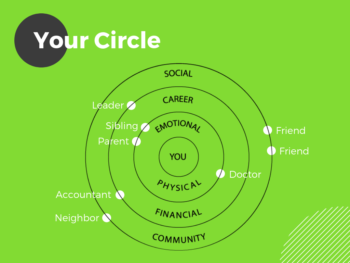
Episode 018: Melanie Seibert–Collaboration as an Introvert
Category:introversion,Introverted Leadership,Podcast,techcommPodcast: Play in new window | Download
Subscribe: Spotify | Amazon Music | iHeartRadio | Podchaser | TuneIn | Deezer | RSS
Episode 018 Show Notes: Melanie Seibert
Introduction

Key concepts
- Content strategy
- Collaborative workspaces
- Creativity exercises
Quotable
So for an introvert, it’s really interesting to be expected to be in office during core business hours every day and working and collaborating closely with people. So it’s interesting to have the opportunity to do that and to find a balance between wanting to sort of get away and do my thinking alone, and then having collaboration time with other people.
Being an introvert to me and my personality means that I sort of shy–I tend to shy away from conflict. I don’t feel super comfortable in a situation where I’m expected to sort of take the lead and command people to do things. That makes me pretty uncomfortable. So my style is more–I like to collaborate with people. I like to support the people on the team and we all together sort of create a great experience for the client.
I’ve learned over time that collaboration, while it’s not sort of my natural mode, is definitely more than worth the sort of effort that it takes me to kind of get out of my comfort zone, because the outputs–the products that we make–are so much better when I’m collaborating with other people.
When you get in a room with more than one person and you’re all focused on the same thing, you can get perspectives that you wouldn’t have access to otherwise.
I’ve been in settings before where being an introvert was difficult because the organization didn’t understand or value introverts as leaders as much. They definitely had a view of leadership as a command-and-control type of leadership. And so in that type of environment, an introvert could be seen as ineffective.
It’s kind of fascinating how you need the time and the quiet and the space, or the books even, to recharge. But you’re still able to go out and be very very social. So you’ve definitely built on that skill.
Resources or Products Mentioned in this Episode
- Prose Kiln
- MIndtouch Top 200 Recognized Content Strategists of 2016
- Prose Kiln Content Strategy Courses
- Kristina Halvorson, Content Strategy for the Web, 2nd Edition
Links
- Follow Hope for the Introvert on Twitter
- Like my page on Facebook
- Support me on Patreon
- Get swag for Hope for the Introvert and Introverted Leadership at Zazzle
Transcript
Ben: Joining us today is Melanie Seibert. Melanie is a senior content strategist at Willow Tree, Inc.. She’s taught content strategy at General Assembly and helped create digital experiences for Razorfish, RackSpace, and C-Panel. Melanie opines about content strategy on her blog, Prose Kiln at ProseKiln.com. I met Melanie last spring at the STC Summit Conference in Orlando, Florida. You can contact Melanie on Twitter at @Melanie_Seibert, I encourage our listeners to visit HopefortheIntrovert.com, where you’ll find complete show notes including a transcript of today’s conversation.
Ben: Hi Melanie. I’m really excited you’re joining us today. I’m looking forward to chatting with you.
Melanie: Hey Ben. Yeah, it’s really great to be chatting with you again.
Ben: Great! So I want to find out a little bit more about Content Strategy, because I’m not sure how much our listeners will know about this, and honestly, I didn’t know much about it myself until a couple of years ago when I ended up on that Content Strategists list and figured I’d better look this up, and then discovered, “Oh yes, I do do content strategy.” I just wasn’t aware of it. [Melanie laughing] So what can you tell us about your job? What does it mean to be a content strategist? And what is your workplace like?
Melanie: Yeah, that’s a great question. So, I got into content strategy. I was a technical writer at a software company and I found that I was documenting UIs [user interfaces] where I had feedback for the Ui itself. So, I would say something like, “Oh, I think that we maybe don’t need to document this, if we change the interface a certain way.” And started really looking into and getting interested in Usability and User Experience from that, and learned that there’s this thing called content strategy. And at the time, Christina Halvorson had just published the first edition of the book Content Strategy for the Web, which was the first book–really popular book about content strategy that I knew about and that I read. And as soon as I learned about it, I was kind of hooked. I had been working as a writer for a really long time and started asking a lot of questions about why are we writing certain things or how should we write them. And the idea of content strategy is really to set up writers and content creators for success. So doing the planning, and the research, and the scheduling, and answering the questions of why, so that when it comes time to create content, writers have that information, and are supported in their role.
Melanie: And that was just super appealing to me, so I’ve been a content strategist ever since then. Today, I work at Willow Tree, which is an agency that makes mobile apps, websites, things like chatbots. But we got our start–the agency got its start–as an app agency. So it’s really a different type of environment for me. I’ve been here for two years. I had never really worked with mobile apps before I came to Willow Tree, but I’ve learned a ton about content strategy and how content works in mobile apps. So it’s been super fun. The company is really amazing, too. The culture’s great. The people are super competent and driven and I learn a ton from them. One thing that’s really interesting about my workplace, is that the company has a really strong point of view on co-location. So for an introvert, it’s really interesting to be expected to be in office during core business hours every day and working and collaborating closely with people. So it’s interesting to have the opportunity to do that and to find a balance between wanting to sort of get away and do my thinking alone, and then having collaboration time with other people.
[bctt tweet=”It’s interesting to collaborate with people and find a balance between wanting to get away and do my thinking alone, and then having collaboration time with other people. Melanie Seibert” username=”hopeintrovert”]
Ben: So it sounds like an interesting challenge for you being in that kind of workplace in general as a content strategist and maybe work in life in general. Melanie, you said you’re an introvert in the workplace, which obviously was one of the main reasons you’re a guest on the program today. How do you find that being an introvert affects how you approach your work and maybe how does that translate to how you approach life in general? And if so, how?
Melanie: Yeah, so it definitely does. Being an introvert to me and my personality means that I sort of shy–I tend to shy away from conflict. I don’t feel super comfortable in a situation where I’m expected to sort of take the lead and command people to do things. That makes me pretty uncomfortable. So my style is more–I like to collaborate with people. I like to support the people on the team and we all together sort of create a great experience for the client.
[bctt tweet=”Being an introvert to me and my personality means that I tend to shy away from conflict. I don’t feel super comfortable in a situation where I’m expected to sort of take the lead and command people to do things. Melanie Seibert” username=”hopeintrovert”]
[bctt tweet=”On style–I like to collaborate with people. I like to support the people on the team and we all together sort of create a great experience for the client. Melanie Seibert” username=”hopeintrovert”]
Ben: Let’s talk a little bit more about what it’s like being an introvert in your workplace, what you’re finding as challenges and in terms of what do you think of strengths that you have in doing that?
Melanie: Yeah, so as I mentioned, we’re collaborating a lot in my workplace, and sort of my natural bent is to want to sort of go into a hole, and think and do my work alone. I kind of learned that early on in school projects where you realize that you have more control over the output if you just work on it yourself. You don’t have to sort of rely on anyone else, but that obviously doesn’t work when you’re working on a team and you’re working across disciplines to try to create something. So I’ve learned over time that collaboration, while it’s not sort of my natural mode, is definitely more than worth the sort of effort that it takes me to kind of get out of my comfort zone, because the outputs–the products that we make–are so much better when I’m collaborating with other people. People just bring perspectives–that it doesn’t matter really how long you spent thinking about something yourself. When you get in a room with more than one person and you’re all focused on the same thing, you can get perspectives that you wouldn’t have access to otherwise. So it’s–it’s really been actually helpful for me to grow and kind of learn the value of collaboration.
[bctt tweet=”We’re collaborating a lot in my workplace, and sort of my natural bent as an introvert is to want to sort of go into a hole, and think and do my work alone. Melanie Seibert” username=”hopeintrovert”]
[bctt tweet=”I’ve learned over time that collaboration, while it’s not sort of my natural mode, is definitely more than worth the sort of effort that it takes me to get out of my comfort zone, because the outputs are so much better. Melanie Seibert” username=”hopeintrovert”]
[bctt tweet=”When you get in a room with more than one person and you’re all focused on the same thing, you can get perspectives that you wouldn’t have access to otherwise. Melanie Seibert” username=”hopeintrovert”]
Melanie: I’ve also had issues in previous–I’ve been in settings before where being an introvert was difficult because the organization didn’t understand or value introverts as leaders as much. They definitely had a view of leadership as a command-and-control type of leadership. And so in that type of environment, an introvert could be seen as ineffective. And so in that past job, I really didn’t have an opportunity to grow because I wasn’t considered to be sort of leader material. So it took a while over time to sort of learn that I have strengths in other areas than commanding. I have strengths in collaboration. Sort of positivity is a strength that I usually bring to the team. I don’t know if you’re familiar with the Gallup Strengths Finder, but it’s another type of personality inventory where they sort of list–there are 34 strengths and you have a top ten and a top five. And so the idea is that everyone sort of has their own unique mix of strengths and it’s not that there’s one combination that a leader must have. You can be any combination of strengths and be a leader or be a valuable team member. So it’s taken me some time to figure that out, but I’ve definitely learned that over the years.
[bctt tweet=”I’ve been in settings before where being an introvert was difficult because the organization didn’t understand or value introverts as leaders as much. Melanie Seibert” username=”hopeintrovert”]
[bctt tweet=”They had a view of leadership as a command-and-control type of leadership. In that environment, an introvert could be seen as ineffective. Melanie Seibert” username=”hopeintrovert”]
Ben: You talked about how in your workplace–that you’re in an environment where you’re expected to collaborate with everyone. In some of my discussions with other guests, one of the big challenges for them has been being in meetings–I guess or collaborative sessions, where as introverts we are so used to processing internally and in many ways finishing our processing and coming up with a well-rounded or well-defined response. How does that work for you? And when you say that you’re–is everybody around a table? Is everybody in a room? How does this actually work?
Melanie: Yeah, there are different types of workshops or activities that we do together, but I will say that typically people are around the table. We have whiteboards, and I think what helps is giving people space and time within the meeting to sort of think. We’ve done activities where there’s a prompt and you’re given two minutes–or five minutes–to think and write something down and then everyone comes back and shares their ideas. Those types of things for me are really great because I don’t feel like I have to sort of jump in, and if everybody’s writing something down then you kind of go around the room and give everyone a chance. So it’s not just the most outspoken people who are contributing. Everybody’s expected to contribute and it just kind of sets up that dynamic so that you don’t–it helps to mitigate that, because I don’t think–I think that’s a common problem. I definitely have that problem. I don’t like to interrupt people. I don’t like to sort of speak up and raise my hand if there’s a momentum to the conversation. So I always assumed that there are other people in the room like me. I think that having an activity that’s crafted with that in mind is pretty helpful. Another thing that I like is to sort of think about it ahead of time. So if you can provide people with the material or whatever it is you’re going to be discussing prior to the meeting, I always like to take that away and look at it ahead of the meeting because I’m the same way. I take time to process and think about things. I’m not as good on my sheet. So that really helps.
Ben: It’s interesting timing wise, because the podcast, I’m currently working on editing with Helen Harbord, I met at TCUK in England early this last fall, and the discussion we were having around meeting behavior got into there are really two types of indiv–I’m sure there are more than two types.–that we talked about two types of people in meetings. You have people like us who are very much waiting for an opportunity to speak, waiting for the other person to stop. But then you have other people who will speak until they’re actually interrupted. So, and don’t assume–and they don’t necessarily assume that anyone else has anything to say unless they actually jump in and interrupt. So we were kind of laughing about that dynamic and how difficult that could be in any kind of workplace setting where you’ve..So you have the A types who do this and the B types who do that. So it’s just funny because some of the themes that we have are recurring. They’re just very common challenges for us as introverts.
Ben: So you had mentioned–we do a pre-podcast questionnaire that we–that I send to our guests so that we’ve got a little bit of a framework about what we’re going to talk about. One of the things that you mentioned on there is that you have, I believe it’s online courses that you’ve developed. Could you talk a little bit about that?
Melanie: Yeah. I got into developing online classes after I learned about General Assembly. And I was working in Austin, Texas at the time and General Assembly was new. If you don’t know what General Assembly is, it’s a company that offers classes to help people. I would say mainly career switching type of folks who want to get into tech or UX or design. It offers classes and I was interested to see whether they had anything on content strategy, because I just think content strategy is like so fascinating and I just wanted to share it with people. And I also feel like it’s a really great career option for people who are in marketing or copywriting or tech writing who sort of find themselves asking a lot of the questions about why we’re doing what we’re doing. So I contacted them and they let me do sort of a two hour Intro to Content Strategy, and I posted about this on my social media and my friends from other cities kept emailing me and saying this is really cool. Is it online anywhere? And at the time they didn’t have online courses and I said, “Well no, but I’m sure if you go online and Google you can probably find something similar.” But when I went online I really had a hard time–at the time this was probably two years ago–finding online courses on content strategy. So I just took that course and took that feedback and made it an online course. So today I have two courses. One’s free and if you go to my website you can sign up for it. It’s just a series of seven emails that come to your inbox and it’s seven discrete lessons and things that you can start doing right away to sort of dip your toe into content strategy and see what it’s like, and if that’s the kind of thing that interests you. And then I also have for people who want to keep going and learn more. I do have a paid course and they’re both listed there on my website.
Ben: I will take a look at that. Like I had mentioned I found out I was a content strategist because the term was relatively new in the industry, and I’m interested in seeing what I can find out from the course, but I do recommend it to our listeners.
Ben: Well, Melanie has been great having our conversation today. I appreciate your time!
Melanie: Yeah, thank you!



















